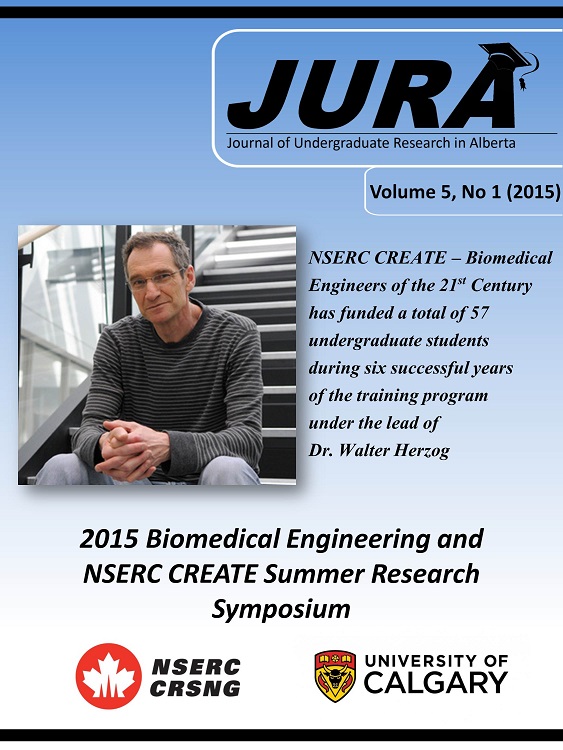A PRINCIPLE INVESTIGATION INTO THE FEASIBILITY OF USING MICROWAVE IMAGING TO MONITOR BONE HEALTH
Keywords:
bone, microwaves, medical imagingAbstract
INTRODUCTION
Assessing bone health is of particular interest in age-associated disease and traumas such as osteoporosis, and fractures from extreme sports. Having tools that can safely and accurately assess bone health allows for the screening, diagnosis, and monitoring of disease or injury. The current gold standard for assessing bone health is high-resolution peripheral quantitative computed tomography (HR-pQCT) allowing direct three-dimensional (3D) visualization of bone.
Recent evidence suggests microwave imaging can be a complementary medical imaging tool to HR-pQCT for dynamic assessment of full bone health [1]. Specifically, it was shown that microwave properties of cancellous bone are sensitive to physical changes in bone. However, this study was purely exploratory and provided no direct evidence for changes in dielectric properties with varying bone health.
In this study, we aim to understand the interaction of electromagnetic waves with bone as a composite material, specifically the material anisotropy. Such information would be crucial to understanding how microwave measurements relate to the physical characteristics of the bone.
METHODS
Image data for the right and left tibia and radius of one female and two male subjects was acquired from HR-pQCT (XtremeCTII, Scanco Medical). The 3D image data was smoothed with a Gaussian filter (σ = 1.6) and segmented using histogram based segmentation. Cubes of edge length 82 voxels (5.002 mm) were extracted from the segmented images based on the bone center of geometry.
The extracted cubes were imported into electromagnetic simulation software (SEMCAD X, Schmid & Partner Engineering AG). A parallel plate waveguide filled with air was excited with a Gaussian pulse polarized in the z-axis (f0 = 6.5 GHz, BW = 11 GHz). The bone and marrow were assigned material properties from literature [2]. Resulting data was exported and processed using custom MATLAB scripts (R2013a, MathWorks). Three simulations were performed per image such that the electromagnetic wave was polarized in each of the three anatomical directions: anterior-posterior, medial-lateral, and proximal-distal.
RESULTS
The effective permittivity, ε’r, was calculated for each of the anatomical directions and plotted across the frequency range of the input signal. A representative plot for all images is shown in Figure 1. The effective permittivity for each orientation tend to vary around a common permittivity.
DISCUSSION AND CONCLUSIONS
The results presented here provide a rudimentary but novel insight into the anisotropic behaviour of bone at microwave frequencies. Furthermore, it presents a technique for 3D model acquisition and simulation of bone not yet present in literature. This technique will allow further exploration of the electromagnetic properties of bone such as a deeper insight into the anisotropic behaviour and development of a model for the effective medium of bone as a composite material. With such information, the microwave measurements of bone could be directly related to the bone’s physical properties. This would prove the potential of microwaves to assess bone health for disease or trauma and allow the development of in vivo imaging tools for assessing disease and trauma.
Downloads
References
Peyman et al. Dielectric Properties of Tissues at Microwave Frequencies. 2005.
Downloads
Published
Issue
Section
License
Authors retain all rights to their research work. Articles may be submitted to and accepted in other journals subsequent to publishing in JURA. Our only condition is that articles cannot be used in another undergraduate journal. Authors must be aware, however, that professional journals may refuse articles submitted or accepted elsewhere—JURA included.


